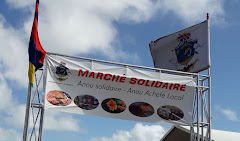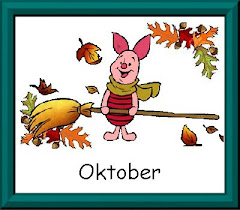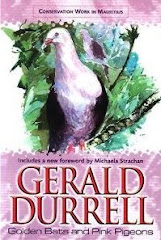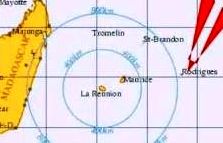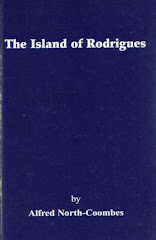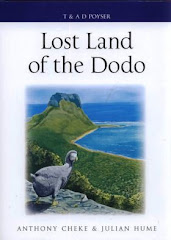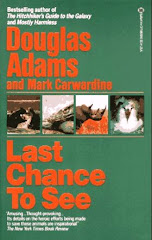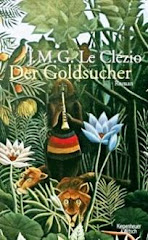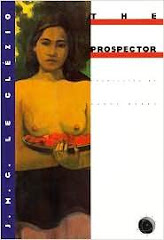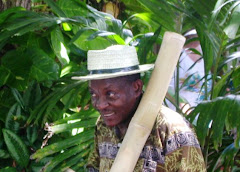"Little Boy" und "Fat Man" wie diese beiden Atombomben über Hiroshima am 6. August und in Nagasaki am 9. August 1945 genannt wurden, töteten 210 000 Menschen - 140 000 in Hiroshima und 70 000 in Nagasaki. Fast alle Opfer gehörten der Zivilbevölkerung an, mehr als zwei Drittel waren Frauen, Kinder und alte Menschen.
Bäume fielen in beiden Städten, aber die großen Bäume in Hiroshima wurden entwurzelt, während diejenigen in Nagasaki eher abgeknickt wurden.-
"Little Boy" and "Fat Man", as these two atomic bombs were called which were dropped over Hiroshima on August 6 and over Nagasaki on August 9 in 1945, killed 210,000 people - 140,000 in
Hiroshima and 70,000 in Nagasaki. Nearly all the victims were civilians
and over two-thirds were women, children and the elderly.(source)
Trees were down in both cities, but the large trees which fell in
Hiroshima were uprooted, while those in Nagasaki were actually snapped
off. (source)
-------
"Praktisch alle Lebewesen, Mensch und Tier, wurden buchstäblich zu Tode versengt."
Zu glauben, dass für mindestens 75 Jahre nichts in der verbrannten Erde von Hiroshima wachsen würde, war weit verbreitet und ein Irrtum; der Oleander war der erste, der zu blühen begann, und gab " den Bewohnern von Hiroshima Hoffnung und Licht."
"Practically all living things, human and animal, were literally seared to death."
It was widely, and erroneously, believed that nothing would grow in the burnt ground of Hiroshima for seventy-five years; the oleander was the first to blossom, and it gave "hope and light to the citizens of Hiroshima." (source)
 Nerium oleander sprouting through the ruins
Nerium oleander sprouting through the ruins
Photo credits George Dorn
Engraved in stone long ago,
Lost in the shifting sand,
In the midst of a crumbling world,
The vision of one flower.
-Tamiki Hara, 原 民喜-
Hara Tamiki war einer der ersten Schriftsteller, der seine persönlichen Erfahrungen während und nach dem Atombombenangriff auf Hiroshima in literarischer Form veröffentlichte. Er lebte vor und während des Krieges mit seiner Frau in Tôkyô, bevor er einige Monate nach deren Tod (1944) vor den anhaltenden Luftangriffen der Amerikaner nach Hiroshima floh und dort, nur ungefähr einen Kilometer vom Ort der Explosion entfernt, nahezu unversehrt blieb. Im Juni 1947 veröffentlichte er die Erzählung „Natsu no hana", eine Art dokumentarische Prosa über seine Erlebnisse in Hiroshima. Der Text beruht ursprünglich auf einem in Katakana geschriebenen Protokoll, „Notes on the bombing", das Hara bereits einen Tag nach dem Bombenangriff begonnen hatte. Die schmerzliche Konfrontation mit dem Tod mehrerer Familienmitglieder prägte Haras Bewusstsein nachhaltig. Sein eigener Tod 1951 - er legte sich auf die Gleise einer vielbefahrenen Bahnstrecke zwischen den Bahnhöfen Kichijôji und Nishi-Ogikubo - wird mit seinen Erlebnissen in Hiroshima, aber auch mit der Angst vor einem neuerlichen Gebrauch der Atombombe seitens der Amerikaner erklärt. (Quelle)

Born in Hiroshima in 1905, Hara was a survivor of the bombing of Hiroshima. The experience of the bomb and the death of his wife were primary themes in his writing. He thought of himself as "a new kind of human being brought down to earth by one shot from the atomic bomb," His best known work, a novel, Summer Flowers, was released in June, 1947. Many believe his final work, The Land of Heart’s Desire, 1951, was Hara’s suicide note. Hara was extremely desponded at the outbreak of the Korean War. Fearing a repeat of history, Hara threw himself in front of an on-coming train in Tokyo, ending his life on March 13, 1951. Hara’s last poem appears on a monument at Hiroshima built in his honor. A selection of Hara’s writing is also included in the Hiroshima case study, found in the first module of this series.

The Hiroshima City Flower
The kyõchikutõ or oleander
Wegen ihrer bemerkenswerten Regenerationskräfte wurde der Oleander die offizielle Blume der Stadt Hiroshima.-
The oleander has been designated the official flower of the city of Hiroshima for its remarkable powers of regeneration. Kiyoshi Hashimoto, director of the Hiroshima Botanical Garden, explains that after the disaster,it seemed that nothing could grow for at least three decades. But Nerium oleander bloomed the next year.
Doctor Takashi Nagai (February 3, 1908 – May 1, 1951)
contemplates the
devastation of the Matsuyama district looking across the Urakami River
towards the Inasa Mountains
In Nagasaki waren es die 1.000 gepflanzten Kirschbäume von Dr. Takashi Nagai, einem überlebenden Arzt der Bombe, die ein Symbol für das Leben inmitten von Zerstörung wurden.
"Im Jahr 1948, nutzt er die 50 000 Yen der Kyushi Times, die ihm bezahlt wurden, um 1000 dreijährige Kirschbäume im Bezirk Urakami zu pflanzen, um diese verwüstete Erde in einen "Berg von Blumen" zu verwandeln ". Auch wenn einige ersetzt wurden, werden diese Kirschbäume immer die "Nagai Senbonzakura" bleiben (die 1.000 Kirschbäume von Nagai) und ihre Blumen schmücken die Häuser von Urakami im Frühjahr. " -
Cherry Trees in Nagasaki's Peace Park
source
In Nagasaki it were the 1000 Cherry Trees planted by Dr. Takashi Nagai, a surviving doctor of the bomb which became a symbol for life.
"In 1948, he uses 50,000 yens paid by "Kyushu
Times" to plant 1,000 cherry trees of three years in the district of
Urakami to transform this devastated earth in "Hill of Flowers". Even if
some were replaced, these cherry trees are always called "Nagai
Senbonzakura" (1,000 cherry trees of Nagai) and their flowers decorate
the houses of Urakami in spring."
Eucalypt at the site of Hiroshima Castle, 740 m from hypocenter. The tree survived the atomic bombing, while the castle was destroyed.
Hibaku ist ein japanisches Wort und bedeutet "etwas, das eine Atombombe erlebt hat."
In der Regel wird es verwendet für "Menschen, die eine Atombombe überlebt haben."
Aber es gibt auch ein japanisches Wort für Bäume, die die Atombombenabwürfe in Hiroshima überlebten ....
"Hibakujumoku 被 爆 樹木
"Die durch die Explosion in Hiroshima innerhalb der ersten 3 Sekunden in einem Abstand von drei Kilometer vom Hypozentrum emittierte Hitze war etwa 40 mal größer als die der Sonne. Die anfängliche Dosisleistung im Hypozentrum war ca. 240 Gy. Laut "Hiroshima and Nagasaki: The Physical, Medical, and Social Effects of the Atomic Bombings", erlitten Pflanzen Schäden nur in den Abschnitten über der Erde, während unterirdische Teile nicht direkt beschädigt wurden. Die Rate der Regeneration war je nach Spezies unterschiedlich. Aktive Regeneration gab es bei Laubbäumen. Rund 170 Bäume, die in Hiroshima im Jahr 2011 wuchsen, gab es tatsächlich dort vor der Bombardierung. ... "
Hibaku is a Japanese word meaning "something that has experienced a nuclear bomb."
Typically it is used in the form hibakusha meaning "people who have survived a nuclear bomb."
But there is also a Japanese word for trees which survived the atomic bombing in Hiroshima....
"Hibakujumoku 被爆樹木
"The heat emitted by the explosion in Hiroshima within the
first three seconds at a distance of three kilometres from the hypocenter was about 40 times greater than that from the Sun. The initial radiation level at the hypocenter was approximately 240 Gy. According to Hiroshima and Nagasaki: The Physical, Medical, and Social Effects of the Atomic Bombings, plants suffered damage only in the portions exposed aboveground, while portions underground were not directly damaged. The rate of regeneration differed by species. Active regeneration was shown by broad-leaved trees. Approximately 170 trees that grew in Hiroshima in 2011 had actually been there prior to the bombing...(source)

Weeping Eucalyptus in Hiroshima

"One of the two pillars of the Sanno Shrine Torii was toppled by the A-bomb blast. The blast also blew away the branches and leaves of the two camphor trees in the precincts of the Shrine, which were then more than 500 years old. At that time, it was feared that the trees might wither and die; however, they gradually began to recover, and now are thickly covered with leaves and branches."
source & Photo credit
"In diesem Zeitalter ständiger globaler Krisen, fällt es leicht zu vergessen, dass es nicht allein die Erde ist, die durch den Menschen gefährdet ist sondern die Menschheit selbst. Im Laufe von dreieinhalb Milliarden Jahren Umweltschwankungen und Katastrophen, haben Organismen aller Art gewaltige Kräfte der Regeneration entwickelt. Einige Arten, typischerweise durch den Menschen als Unkraut bezeichnet, scheinen besonders geschickt darin zu sein, nicht nur schwere Störungen zu überleben, sondern in ihrem Angesicht geradezu zu florieren. Diese Organismen sind alle den meisten Menschen vertraut und in der gemäßigten Welt gehören dazu so bekannte Kreaturen wie Ratten, Schaben, Löwenzahn, und lila Blutweiderich.
Unabhängig davon, welches Schicksal die Erde erwartet, ist es klar, dass das Leben weitergehen wird mit oder ohne Menschen. Nirgendwo ist diese Wahrheit deutlicher als in Hiroshima, Japan, der ersten Stadt auf dem Planeten, der die volle Kraft einer Atombombe am 6. August 1945 erlebte. In den Köpfen der Menschen ist die Detonation einer Atombombe verbunden mit totaler und absoluter Zerstörung, doch dies war kaum der Fall. Am Hypozentrum der Explosion war die Verwüstung in der Tat komplett, doch nur wenige hundert Meter entfernt überlebten viele Menschen, wie auch viele Pflanzen und Tiere, wenn auch schwer beschädigt.
Ich habe mich lange über die Bäume, die die Atombombenexplosion überlebt haben, gewundert und war neugierig zu erfahren, welche Arten am widerstandsfähigsten auf die Stoßwelle und den Feuerball reagiert haben, die verantwortlich waren für die schwersten Beschädigungen. Mein Interesse an dieser Frage wurde zum ersten Mal geweckt, als ich über einen Ginkgo-Baum las, der im Hiroshima "Peace Park" wächst, ein paar hundert Meter vom Hypozentrum, der angeblich die Atombombenexplosion überlebt hatte (siehe PF Michel, GinkgoBiloba: L'Arbre Qui A vaincu Le Temps, 1986).
Bei dem Versuch, die Wahrheit dieses Berichts zu validieren (was ich nicht schaffte), stieß ich auf das Werk des japanischen Fotografen Hiromi Tsuchida, der akribisch die Existenz von vielen authentischen Hibaku-Bäumen dokumentiert hat. Hiromi Tsuchida wurde in Fukui, Japan geboren, im Jahr 1939. Er hat eine massive dreiteilige Fotoarbeit über Hiroshima veröffentlicht, produziert zwischen 1976 und 1983, die sich konzentriert auf die Geschichte und die Erinnerung an die Atombombe. Unter Verwendung Hunderter von Bildern, präsentiert er eine systematische und gemessene Chronik der Nachwehen der atomaren Apokalypse. Nicht nur hat Tsuchida die Bäume fotografiert, die die Bombe überlebten, sondern auch die Menschen und ihre persönlichen Sachen. Tsuchida Fotografien veranschaulichen die menschliche Dimension der Tragödie und alltägliche Gegenstände transformieren in erschreckenden Bildern zu einem tödlichen Alptraum.
Mit Blick auf Tsuchida Fotografien von Bäumen, weicht das Gefühl der Tragödie einem Gefühl des Wunderns an der unbeugsamen Vitalität des Lebens. Dies sind die wahren Überlebenden, Pflanzen, die dem Schlechtesten widerstehen können, was die Menschheit zu bieten hat."
Peter Del Tredici
Ginkgo tree (Ginkgo bilobal, Shukukeien garden, 1,400 meters from the
hypocenter, photographed in 1993
"In this era of constant global crises, it’s easy to forget that it is not the earth that is endangered by human activities so much as humanity itself. Over the course of three and a half billion years of environmental fluctuations and catastrophes, organisms of all types have developed tremendous powers of regeneration. Some species, typically referred to by humans as weeds,seem especially adept at not merely surviving severe disturbance, but of actually flourishing in the face of it. These organisms are all too familiar to most people and, in the temperate world, include such well-known creatures as rats, cockroaches, dandelions, and purple loosestrife.
Regardless of what fate awaits the earth, it is clear that life will go on, with or without people. Nowhere is this truth more evident than in Hiroshima, Japan, the first city on the planet to experience the full force of a nuclear bomb on August 6, 1945. In most people’s minds the detonation of an atomic bomb connotes total and absolute destruction, yet this was hardly the case. At the hypocenter of the blast, the devastation was indeed complete, yet just a few hundred meters away many people, as well as many plants and animals,survived, albeit seriously damaged.
I have long wondered about the trees that survived the atomic bomb blast, curious to know which species were most resilient to the shock wave and fireball that were responsible for the most serious damage. My interest in this question was first whetted when I read about a ginkgo tree growing in the Hiroshima "Peace Park," a few hundred meters from the hypocenter, that supposedly had survived the atomic bomb blast (see P. F. Michel, Ginkgo Biloba: L’Arbre Qui A Vaincu Le Temps, 1986).
While attempting to validate the truth of this report (which I was unable to do), I came across the work of the Japanese photographer Hiromi Tsuchida, who has meticulously documented the existence of many authentic hibaku trees. Hiromi Tsuchida was born in Fukui, Japan,in 1939. He has published a massive three-part photographic work about Hiroshima, produced between 1976 and 1983, that focuses on the history and memory of the atomic bomb. Using hundreds of pictures, he presents a systematic and measured chronicle of the aftermath of the atomic apocalypse. Not only has Tsuchida photographed the trees that survived the bomb, but also the people and their personal belongings. Tsuchida’s photographs illustrate the human dimensions of the tragedy and transform everyday objects into horrifying images of a deadly nightmare.Looking at Tsuchida’s photographs of trees, the sense of tragedy gives way to a sense of wonder at the indomitable vitality of life. These are the true survivors, plants that can withstand the worst humanity has to offer."
Peter Del Tredici

Camphor tree (Cinnamomum camphora), 1,200 meters from the hypocenter, photographed
in 1979.
Ein etwas anderer Blick ...
A different approach....
 A VISUAL RECORD
Elin O'Hara Slavick ist eine Fotografin, die Jahre in Hiroshima verbrachte und an einer bildlichen Bestandsaufnahme der Zerstörung arbeitete.
A VISUAL RECORD
Elin O'Hara Slavick ist eine Fotografin, die Jahre in Hiroshima verbrachte und an einer bildlichen Bestandsaufnahme der Zerstörung arbeitete.
"Dann gibt es die Fotografien selbst, noch immer Ausdruck von Licht auf Materie und Ereignissen. Ich machte Hunderte von Aufnahmen, während ich in Hiroshima war, digitale und analoge, in Farbe und Schwarzweiß, Bilder des Überlebens und Bilder der Zerstörung. Es gibt unter ihnen eine große Reihe von Löwenzahnköpfen, dabei in den Wind zu verschwinden, eine kleine Geste inmitten eines tiefgreifenden Ereignisses.
"Die Bombe ließ nicht nur die unterirdischen Organe der Pflanzen intakt; sie schien sie stimuliert zu haben. Überall waren Flockenblumen und Yucca, Gänsefuß, Winden und Tageslilien, die haarige fruchtige Bohne, Portulak und Spitzklette und Sesam und Rutenhirse und Mutterkraut. "Das Blühen der Blumen bot eine falsche und flüchtige Hoffnung für die Opfer und Überlebenden der A-Bombe. Und wie dieses Zeichen der Regeneration, verschwindet ein Löwenzahn, vielleicht zusammen mit dem Atem des Wunschs eines Kindes, aber in der Regel verschwindet er ohne vorherige Ankündigung - klein, wie ein Hauch von Rauch, fragile Kugeln, kleine stämmige und temporäre Sterne..."
Elin O'Hara Slavick is a photographer who spent years in Hiroshima working on a visual record of the destruction...
Then there are the photographs
themselves, still exposures of light upon matter and events. I made
hundreds of exposures while in Hiroshima, digital and analog, color and
black and white, images of survival and images of destruction. There is a
large series of dandelion heads about to disappear into the wind, a
small gesture in the midst of a profound event.
“The
bomb had not only left the underground organs of plants intact; it had
stimulated them. Everywhere were bluets and Spanish bayonets,
goosefoot, morning glories and day lilies, the hairy-fruited bean,
purslane and clotbur and sesame and panic grass and feverfew.”
The
blooming of flowers offered a false and fleeting hope to the victims
and survivors of the A-bomb.
And like this sign of regeneration, a
dandelion vanishes, perhaps with a child’s breath of a wish, but
usually it disappears without notice – small, wispy, fragile balls,
tiny-stemmed and temporary stars. ...


















































